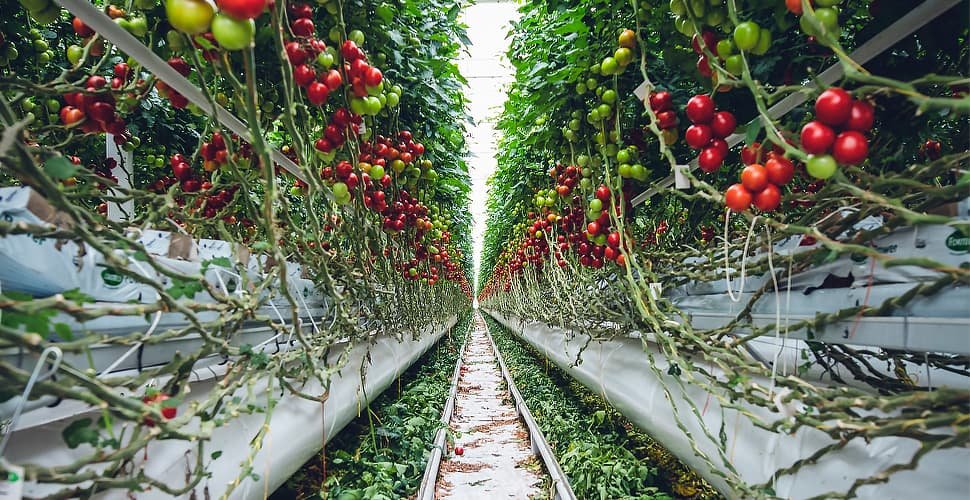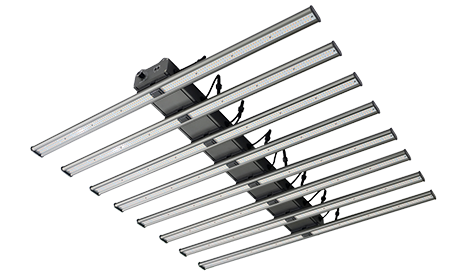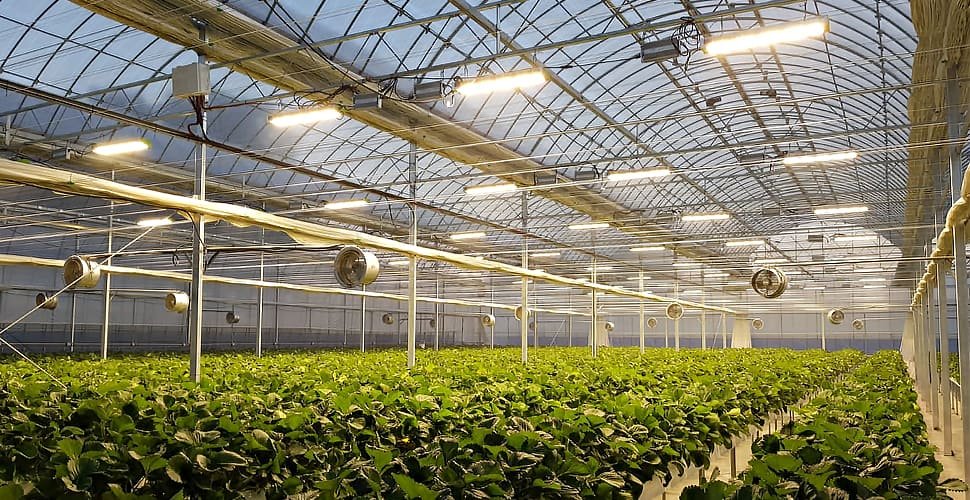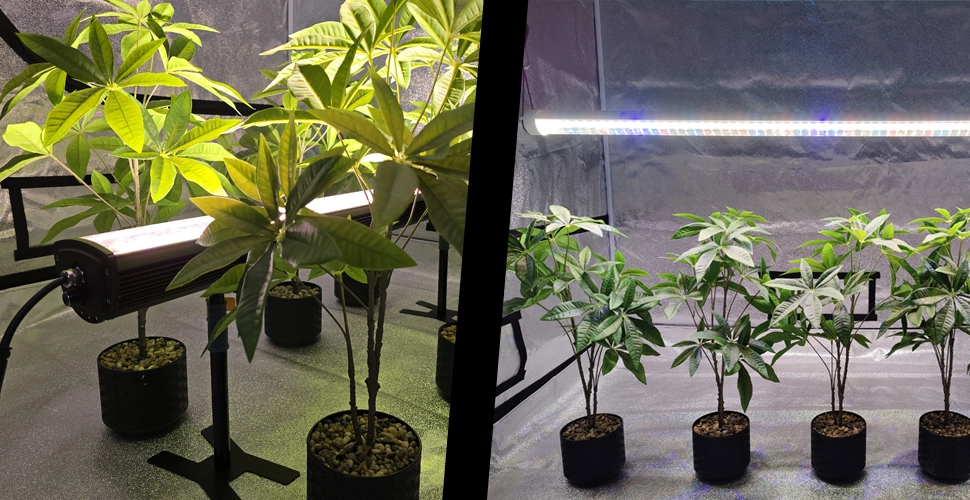Table of Contents
We all know that strawberries are one of the most popular garden fruits. You can grow this fragrant, sweet and juicy fruit yourself. Strawberries grow very well in the ground, in raised beds, or against a fence in the sun – a natural choice. But have you considered the advantages of growing them indoors? Growing strawberries indoors with commercial greenhouse lighting will allow you to produce a crop of delicious berries any time of year.
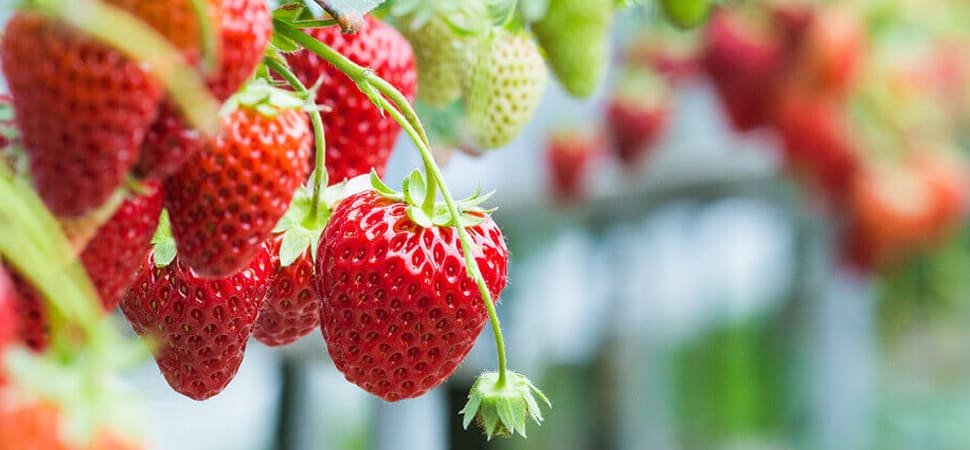
Growing indoors will protect your strawberries from sudden frosts and dangerously low temperatures, as well as from outdoor pests. Not only will greenhouse strawberries satisfy consumers, but they will also help growers maintain cash flow.
There are some important considerations to keep in mind before you venture into trying to use an already-built greenhouse for strawberry production. In this article, we offer you a guide to growing strawberries indoors. This is not only useful for home gardening, but also for greenhouse gardening.
Picking The Strawberry Plants Variety
To grow any fruits, vegetables and plants, you need to choose a starting point. You can grow strawberries from seeds, transplant them from strawberry plants given by a friend, or buy healthy strawberry plants in pots from your neighborhood grocery store.
Let’s start by learning about the varieties of strawberries. Pick a plant that you like and suits you.
The best types of strawberries for indoor growing are called day-neutral varieties. These varieties produce flowers and fruit all year long, even on cloudy days and during shorter daylight periods in winter. If you live in a cold climate, these varieties will keep producing fruit from October through March or April.
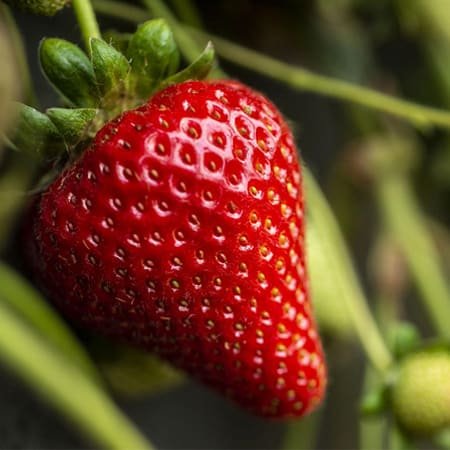
Summer Fruiting Strawberries
Because it is a slightly larger berry, summer-fruiting strawberries are ideal for making jams, canning or dehydrated strawberry crisps.
These beautiful guys tend to produce all their fruit at once in two to three years. They have a short but heavy harvesting period of two to three weeks. This can be any time from early summer to mid and late summer.
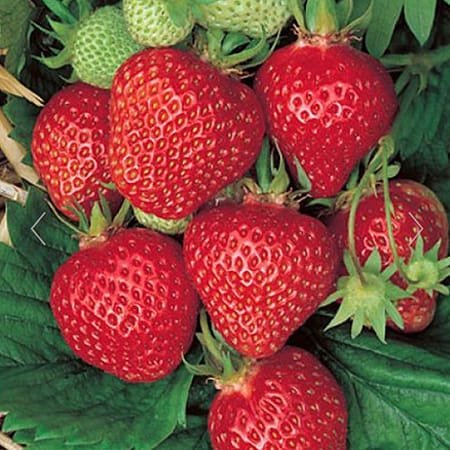
Ever-Bearing Strawberries
Perpetual strawberries grow for a long time, from about early summer until the first frost of autumn. Throughout the growing season, they receive some energy here and there, so there is a small amount of picking.
Its fruits are small and uniform and are outstanding in flavor. One more characteristic, it is unlikely to produce runners. However, the fruit size and total crop decrease in the second year and it is best to replant each year.
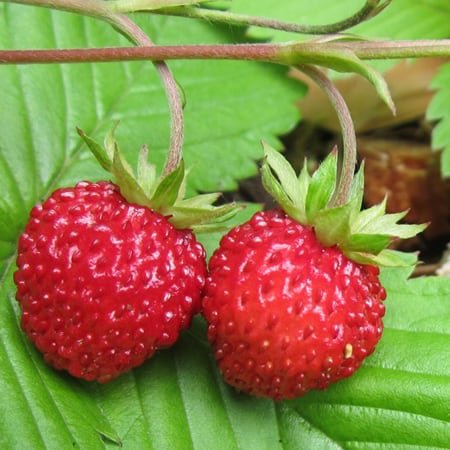
Wild Strawberries
These small, shade-loving plants produce small, sweet, fragrant fruits and tolerate cooler conditions better than most larger-fruited strawberries.
Importantly, they do not require special care and feel happy growing in the shade.
How To Grow Strawberries Indoors?
Strawberries are one of the easiest plants to grow indoors with commercial greenhouse lighting. They are also a great addition to any garden or greenhouse.
Soil growing and hydroponic growing are both ideal indoor growing methods.
Factors to consider when growing strawberries are: strawberry variety, planting time, location, farming system, friendly environment, care and maintenance, harvesting berries, renovating berry beds and protecting strawberry plants from damage during dormant months.
How To Grow Strawberries In A Strawberry Pot?
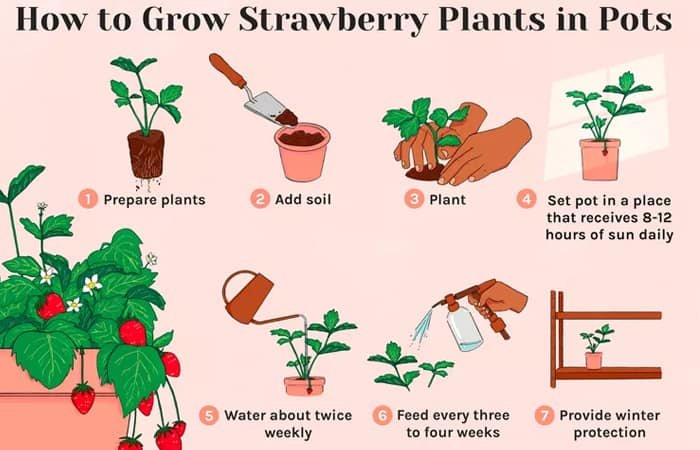
To grow indoors in conventional soil, you will need the following leading tools.
- Sowing Pots: Strawberries are shallow-rooted plants. You will need a 6 to 8-inch deep pot, preferably a window planter. It will hold three plants, keeping 3 to 4 inches between each plant, so we can have a nice little display.
- Potting Mix: Standard potting mix/all-purpose peat mixes. Clay soil is not recommended. Over time, the soil becomes more compact and will not drain well.
- Fertilizer: Balanced mix fertilizer. This should be equal parts of nitrogen, phosphorus and potassium.
- Greenhouse Light for Plants: It can provide the equivalent of more than 6 hours of direct sunlight.
Plant Strawberry Seeds
Truth be told, growing everything from seed is bound to be difficult. If you are a novice, starting with strawberry pots will be relatively easy.
- If you are using seeds, soak them overnight before planting them in a tray filled with potting mix.
- The next day, choose an open-window pot for the next step. Plan for each space station site to be 4 inches apart. For each station, press 4 seeds into the surface. Remember to keep the soil warm and the temperature controlled at 40-60°F, preferably 60°F.
- Make sure to spray them with watering every few days to keep them moist until they germinate.
Transplanted Strawberries Plants
To transplant bare-root strawberry plants, you need to follow these steps.
- Prepare a wide and shallow pot and fill it with ½ of the soil, shaping the clay into a conical shape.
- Prepare a strawberry bare root and trim off any roots that look unhealthy. Then shape it into a cone to fit the soil in the pot.
- Cover the highest roots with soil and adjust the soil as needed.
- Finish with a thorough watering.
Checking For New Shoots (Week 2-3)
The seeds will germinate soon and can be transplanted when they have 3-4 true leaves. You can see seedlings in as little as 7 days, or possibly 20 days. If after 30 days you still have no germination, your setup is probably too cold.
Thin Your Seedlings (Week 4)
Thin your seedlings to just one seedling per site, leaving the largest plants. By removing the smaller seedlings, you allow the largest, strongest seedlings to thrive by reducing competition for water, food and space.
Requirements For Growing Strawberries Indoors
Location
In limited circumstances, natural indoor light is sufficient for strawberry plants to grow well.
If you live in a cool climate, you place them near a south-facing window or glass door so they get some direct sunlight in the winter as well.
If you live in an area with mild winters, you can put them outside in the summer and bring them back inside when the temperature drops below 50 degrees Fahrenheit (10 degrees Celsius).
Also, make sure you do not place strawberry plants near the hot and cold vents of air conditioners and heaters. Strawberry plants prefer temperatures of 55 to 75 degrees Fahrenheit (12 to 24 degrees Celsius). If it gets too hot, you may find that your strawberries start to melt.
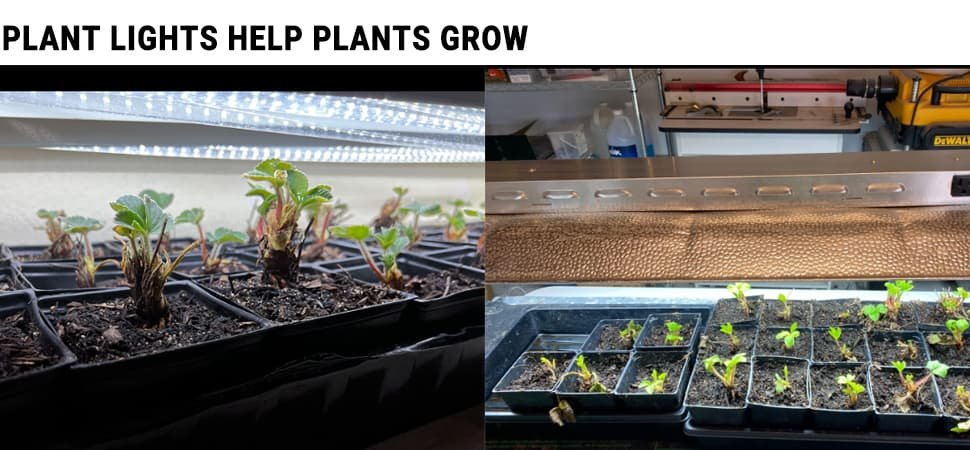
Lighting
In limited circumstances, natural indoor light is sufficient for strawberry plants to grow well.
If you want to grow a lot of strawberries, you will still need greenhouse lighting options to assist with growth. For an introduction to it, please visit our post on how grow lights work for plants better.
Strawberry plants need the equivalent of more than 6 hours of direct sunlight to grow best. If your home or apartment doesn’t have enough natural light, you will need to choose a grow light to assist in plant growth.
Fluorescent lights produce very little heat and don’t require special reflectors or cooling systems. However, full spectrum LED greenhouse lighting is suitable for indoor growing. LEDs are ideal for growing strawberries indoors because of their low heat output, high efficiency, and rich spectrum. They also have a long lifespan, which means you won’t need to replace them for years after you grow your strawberry plants.
Follow the manufacturer’s instructions and place commercial greenhouse LED grow lights about 12 inches above the strawberry plants to provide enough light for them to thrive. You can use a timer to have it turn off automatically after sunset, or turn it off manually to allow your strawberry plants to rest at night.
Strawberries are short-day plants, which means they will grow faster if they need more than 12 hours of darkness. If you want them to bloom as soon as possible, greenhouse artificial light can be turned on for only 10 hours a day.
Potting Mixes
Please choose a standard potting mix or an all-purpose peat mix, clay soil is not recommended. Over time, the soil becomes more compact and will not drain well.
Watering
The downside to strawberry potted plants is that they need to be watered regularly. And you really have to be careful with watering because the plants at the top will get most of the water. Also, the clay will wick away moisture, which makes it less suitable in hotter climates.
If there is not much sun and the air around the plant is cold and wet, water only when 1 inch of topsoil is dry. Morning is the best time to water!
When you have a terracotta pot that you particularly like and looks good, but you don’t want to water it often, there is one thing you can do. Put a film over it, or put a snug plastic pot inside the terracotta pot, so you get all the advantages of a terracotta pot. Kill two birds with one stone, without being impractical.
Fertilizer
Whichever brand of fertilizer you choose, make sure it contains calcium and magnesium, especially if your soil is acidic. You can also feed your strawberries with tomato or rose fertilizer once flowering has started.
If your strawberry plants show symptoms of over-fertilization, such as yellowing or wilting of the lower leaves, browning of the leaf tips and edges, reduce the fertilizer dose or extend the duration of the re-fertilization.
Pruning
Sometimes, strawberries have this very long stem called “runner”. This is the way the strawberry reproduces itself. The strawberry sends these runners out so that they can touch the ground, produce roots, and then there is a new little plant.
However, we do not want to produce runners in the first year of planting. Rather, we want to concentrate the plant’s energy and thrive at this stage. There is also the need to remove unwanted flowers.
Pests and Diseases
One of the main advantages of growing strawberries indoors is that you don’t have to worry about pests. However, you still need to watch out for common garden mites and aphids.
Pollination
You need to pollinate the strawberry flowers manually, using any soft brush will do.
How To Grow Strawberries Hydroponically?
Hydroponic strawberries are an efficient, clean and fun new way to grow strawberries. It allows you to grow your favorite strawberries in the comfort of your home.
Home Gardening
For home gardening, all you need is an automatic hydroponic planter.
Its built-in full-spectrum small greenhouse grow lights provide a specific spectrum to meet all the growth stages of the plants. the LED panel is designed for 16 hours on and 8-hour off cycles. Equipped with a large capacity water tank and more than 10 pods, it supports you with enough space to grow strawberries.
The default working mode of the hydroponic vegetable garden is 16h on / 8h off. To promote the growth of vegetables, you can manually set different growing times for your plants on the app so you can enjoy the harvesting process.
All you need to do is to follow the steps in the instructions, put the strawberry seeds in the planting pod, turn on the plant light and wait quietly for the strawberries to bear fruit.

Greenhouse Growers
Hydroponic strawberry plants take 90 to 120 days to produce fruit. If you are using the right type of hydroponic growing system you will get twice the work done! These vary greatly in price, number of plants and performance. Therefore, you need to do your research when purchasing.
Vertical Hydroponic System
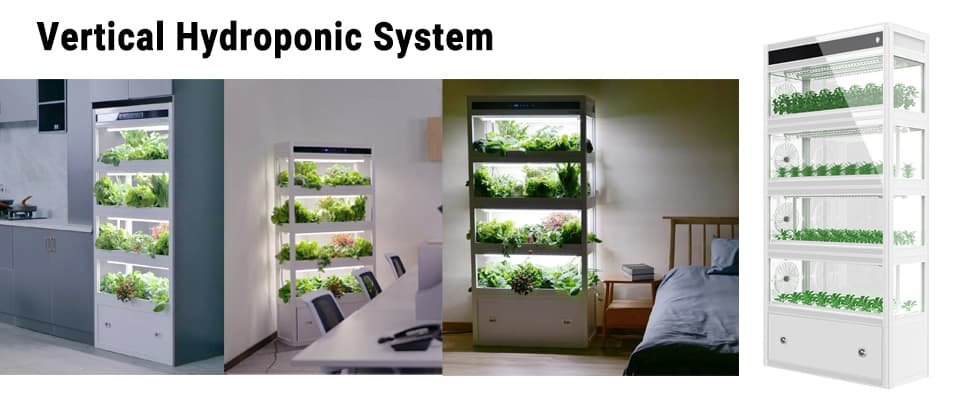
The system is highly popular among the growers who will be growing strawberries in hydroponics. It is suitable for the construction of plant factories of different sizes, for small-scale growing needs such as high-end restaurants and communities, and is equally well suited for science promotion and commercial display configurations.
It is a multi-layer modular structure, sturdy and durable. The integrated structure of water and electricity, and complete sets of equipment include only three standard interfaces of water supply and drainage and electricity. A single set of equipment can be flexibly DIY customized for different floor heights and floors.
28 minutes fast assembly construction design: according to the parts list packaging and delivery of products, installation without special tools, two people can complete the installation of equipment in 28 minutes.
Cons: High initial setup costs, ideal for commercial-grade growers.
Ebb And Flow System
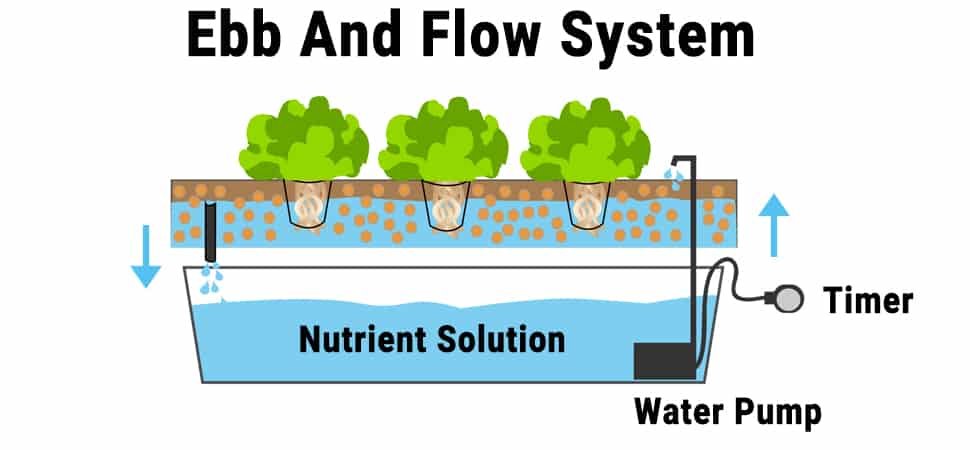
This system is most popular among hydroponic strawberry growers. It involves the use of a timer to regulate how often the water is pumped into the growing trays or containers containing the nutrient solution and plants.
The pump cycles on and off, allowing the strawberry roots to absorb the maximum amount of nutrients. It also minimizes waterlogging in the tanks where the strawberries are grown.
Cons: This type of system requires more work and you must monitor and control when this happens. However, it will pay for itself over time due to the low maintenance requirements.
Hydroponic Drip Irrigation System
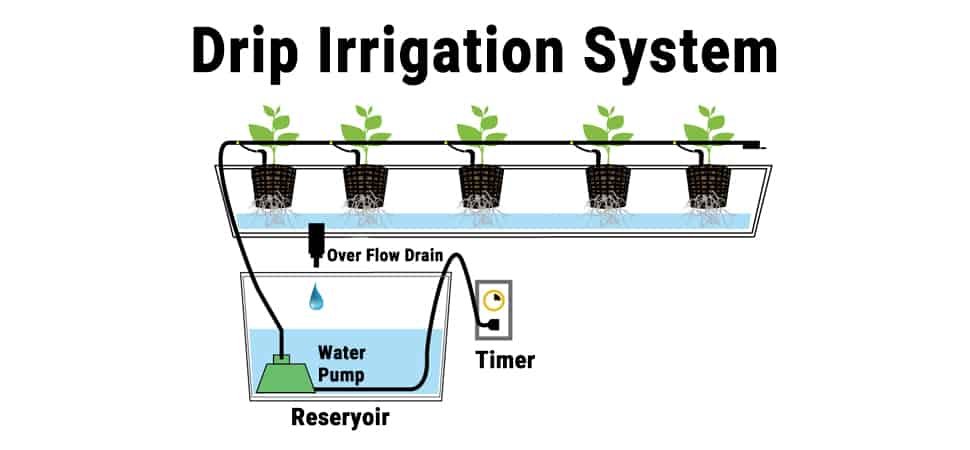
This system is also fairly easy to set up but does require some upfront investment and you will need a timer and pump.
The basic principle of this strawberry growing kit is that it is a drip irrigation system that needs to be assembled. The plants don’t sit in the water. They are simply suspended above the surface, which also means less chance of rot.
Cons: There is more work involved when setting up this hydroponic strawberry growing system and maintaining it regularly. And make sure you are not tempted by cheaper kits!
Nutrient Film Technology

Nutrient Film Technology (NFT) is perfect if you’re looking for a low-cost way to hydroponically grow in your backyard or on your balcony. But there’s more work involved here, just not much upfront cost.
NFT allows plants to grow in a container filled with nutrient solution. The plant floats on top of the tank. There is always some water flowing through it to provide continuous nutrition. To make sure it works properly, you have to manually pump the liquid onto the film periodically so it can drip again and stay there.
Cons: It takes up more growing space than other systems because you need containers or troughs to grow strawberries and water. Also, you need a pump to keep the liquid flowing properly. Due to the high initial setup cost, NFT is only recommended for commercial-grade growers.
Best Month To Plant Strawberry Pants
For home planting, it is best to choose spring when the temperature is more suitable for everything to grow, and March-April is the best period. If the temperature is too high in summer, the plant will be dormant and the number of fruits will be affected.
In fact, strawberries are perennial herbs and can be planted all year round as long as there is a suitable temperature. Many strawberries in greenhouses can produce fruit in winter as usual.
Conclusion
Following these tips will help you grow these delicious fruits. Hydroponic systems with commercial greenhouse lighting can make it easier for you to grow strawberries indoors.
Strawberry growing is simple and rewarding if you have a greenhouse and the right space to grow them. We hope that the information provided has been useful and will help you to enjoy homegrown strawberries in your own garden.
Check out our blog for more growing guides and tips, such as how to grow grapes in a greenhouse growing guide and the best guide to using greenhouse lighting fixtures.
Jayes
As a Digital Marketing Manager at AUXGROW, Jayes combines a passion for hydroponic systems and expertise in LED grow lights. With hands-on experience and a deep understanding, Jayes guides you through the world of sustainable cultivation.

